Regulation of host-microbiota interaction by the adaptive immune system
The human gastrointestinal (GI) tract is a complex ecological niche, in which all the three domains of life (Archaea, Bacteria and Eukarya) and Viruses co-exist in close association with the host. This complex microbial community, referred to as the gut microbiota, has co-evolved with the host in a mutualistic relationship that influences many physiological functions such as energy harvesting, development and immune system activity. The subtle equilibrium between the gut microbiota and the host is a key element in human health. In fact, alterations in the composition of the microbial community structure, termed dysbiosis, have been associated to an increasing number of medical conditions. Since the immune system and the gut microbiota start developing together at birth, it has been hypothesized that their co-evolution selects and maintains mutualistic or symbiotic microorganisms within the GI niche. Central in this homeostatic relationship is the local production of immunoglobulin A (IgA), which is the most copious Ig isotype produced by the human immune system. IgA interaction with the polymeric Ig receptor (pIgR) expressed in enterocytes and luminal secretion guarantee mucosal protection by neutralizing invading pathogens and microbial inflammatory compounds as well as intestinal function by selecting beneficial microbes. We investigate mechanisms regulating the secretory IgA response and repertoire that in turn might influence host physiology and pathophysiology by shaping microbiota composition.
Projects
- Probing gut-tumor axis during immune checkpoint blockade.
- The secretory IgA repertoire in intestinal homeostasis.
Team
| Nome / Name | Ruolo / Role | |
|---|---|---|
| Elena Carelli | PhD student | carelli@ingm.org |
| Eugenia Galeota | Research Scientist | galeota@ingm.org |
Publications
- Protection from environmental enteric dysfunction and growth improvement in malnourished newborns by amplification of secretory IgA.
Perruzza L., Rezzonico Jost T.., Raneri M, Gargari G., Palatella M., De Ponte Conti B., Seehusen F., Heckmann J., Viemann D., Guglielmetti S., Grassi F. Cell Reports Medicine, 16: 101639 (2024)
- Immunomolecular and reactivity landscapes of gut IgA subclasses in homeostasis and inflammatory bowel disease.
Tejedor Vaquero S., Neuman H., Comerma L., Marcos-Fa X., Corral-Vazquez C., Uzzan M., Pybus M., Segura-Garzón D., Guerra J., Perruzza L., Tachó-Piñot R., Sintes J., Rosenstein A., Grasset E.K.., Iglesias M, Gonzalez Farré M., Lop J., Patriaca-Amiano M.E., Larrubia-Loring M., Santiago-Diaz P., Perera-Bel J., Berenguer-Molins P., Martinez Gallo M., Martin-Nalda A., Varela E., Garrido-Pontnou M., Grassi F., Guarner F., Mehandru S., Márquez-Mosquera L., Mehr R., Cerutti A., Magri G. The Journal of Experimental Medicine, 221: e20230079 (2024)
- Postnatal supplementation with alarmins S100a8/a9 ameliorates malnutrition-induced neonate enteropathy in mice.
Perruzza L., Heckmann J., Rezzonico Jost T., Raneri M., Guglielmetti S., Gargari G., Palatella M., Willers M., Fehlhaber B., Werlein C., Vogl T., Roth J., Grassi F., Viemann D. Nature Communications, 15:8623, doi: 10.1038/s41467-024-52829-x (2024)
- CD304+ adipose tissue-derived mesenchymal stem cell abundance in autologous fat grafts highly correlates with improvement of localized pain syndromes.
Rezzonico Jost T., Lozito A., Mangani D., Raimondi A., Klinger F., Morone D., Klinger M., Grassi F. and Vinci V. Pain 165: 811-819 (2024)
- Macrophages and glia are the dominant P2X7-expressing cell types in the gut nervous system – no evidence for a role of neuronal P2X7 receptors in colitis.
Jooss, T., Zhang, J., Zimmer, B., Rezzonico-Jost, T., Rissiek, B., Felipe Pelczar, P., Seehusen, F., Koch-Nolte, F., Magnus, T., Zierler, S., Huber, S., Schemann, M., Grassi, F. and Nicke, A. Mucosal Immunology 16: 180-193 (2022)
- Apyrase-mediated amplification of secretory IgA promotes intestinal homeostasis.
Perruzza L., Strati F., Raneri M., Li H., Gargari G., Rezzonico-Jost T., Palatella M., Kwee I., Morone D., Seehusen F., Sonego P., Donati C., Franceschi P., Macpherson A. J., Guglielmetti S., Greiff V. and Grassi F. Cell Reports 40: 111112 (2022)
- mTOR-dependent translation drives tumor infiltrating CD8+ effector and CD4+ Treg cells expansion.
De Ponte Conti B., Miluzio A., Grassi F., Abrignani S., Biffo S., Ricciardi S.
eLife, 10: e69015 (2021)
- Commensal bacteria promote endocrine resistance in prostate cancer through androgen biosynthesis.
Pernigoni N., Zagato E., Calcinotto A., Troiani M., Mestre R.P., Cali B., Attanasio G., Troisi J., Minini M., Mosole S., Revandkar A., Pasquini E., Elia A.R., Bossi D., Rinaldi A., Rescigno P., Flohr P., Hunt J., Neeb A., Buroni L., Guo C., Welti J., Ferrari M., Grioni M., Gauthier J., Gharaibeh R.Z., Palmisano A., Lucchini G.M., D’Antonio E., Merler S., Bolis M., Grassi F., Esposito A., Bellone M., Briganti A., Rescigno M., Theurillat J.P., Jobin C., Gillessen S., de Bono J., Alimonti A. Commensal bacteria promote endocrine resistance in prostate cancer through androgen biosynthesis.
Science, 374: 216-224 (2021)
- Caloric restriction promotes immunometabolic reprogramming leading to protection from tuberculosis.
Palma C., La Rocca C., Gigantino V., Aquino G., Piccaro G., Di Silvestre D., Brambilla F., Rossi R., Bonacina F., Lepore M.T., Audano M., Mitro N., Botti G., Bruzzaniti S., Fusco C., Procaccini C., De Rosa V., Galgani M., Alviggi C., Puca A., Grassi F., Rezzonico-Jost T., Norata G.D., Mauri P., Netea M.G., de Candia P., Matarese G. Cell Metabolism 33: 300-318 (2021).
- P2X7 receptor activity limits accumulation of T cells within tumors.
Romagnani A., Rottoli E., Mazza E.M.C., Rezzonico-Jost T., De Ponte Conti B., Proietti M., Perotti M., Civanelli E., Perruzza L., Catapano A.L., Baragetti A., Tenedini E., Tagliafico E., Falzoni S., Di Virgilio F., Norata G.D., Bicciato S. and Grassi F.
Cancer Research, 80: 3906-3919 (2020)
- Prophylactic activity of orally Administered FliD-reactive monoclonal SIgA against Campylobacter infection.
Perruzza L., Jaconi S., Lombardo G., Pinna D., Strati F., Morone D., Seehusen F., Hu Y., Bajoria S., Xiong J., Kumru O.S., Joshi S.B., Volkin D.B., Piantanida R., Benigni F., Grassi F., Corti D., Pizzuto M.S.
Frontiers in Immunology, 11: 1011 (2020)
- Enrichment of intestinal Lactobacillus by enhanced secretory IgA coating alters glucose homeostasis in P2rx7-/- mice.
Perruzza L., Strati F., Gargari G., D’Erchia A.M., Fosso B., Pesole G., Guglielmetti S. and Grassi F.
Scientific Reports, 9: 9315 (2019)
- P2X7 receptor restrains pathogenic Tfh cell generation in systemic lupus erythematosus.
Faliti C.E., Gualtierotti R., Rottoli E., Gerosa M., Perruzza L., Romagnani A., Pellegrini G., De Ponte Conti B., Rossi R. L., Idzko M., Mazza E. M. C., Bicciato S., Traggiai E., Meroni P. L. and Grassi F.
The Journal of Experimental Medicine, 216: 317-336 (2019)
- ATP released by intestinal bacteria limits the generation of protective IgA against enteropathogens.
Proietti M., Perruzza L., Scribano D., Pellegrini G., D’Antuono R., Strati F., Raffaelli M., Gonzalez S. F., Thelen M., Hardt W. D., Slack E., Nicoletti M. and Grassi F.
Nature Communications, 10:250, doi: 10.1038/s41467-018-08156-z (2019)
- TRPM7 kinase activity is essential for T cell colonization and alloreactivity in the gut.
Romagnani A., Vettore V., Rezzonico-Jost T., Hampe S., Rottoli E., Nadolni W., Perotti M., Meier M.A., Hermanns C., Geiger S., Wennemuth G., Recordati C., Matsushita M., Muehlich S., Proietti M., Chubanov V., Gudermann T., Grassi F. and Zierler S.
Nature Communications, 8:1917, doi: 10.1038/s41467-017-01960-z (2017)
- T follicular helper cells promote a beneficial gut ecosystem for host metabolic homeostasis by sensing microbiota derived extracellular ATP.
Perruzza L., Gargari G., Proietti M., Fosso B., D’Erchia A.M., Faliti C.E., Rezzonico-Jost T., Scribano D., Mauri L., Colombo D., Pellegrini G., Moregola A., Mooser C., Pesole G., Nicoletti M., Norata G.D., Geuking M.B., McCoy K.D., Guglielmetti S. and Grassi F.
Cell Reports, 18: 2566-2575 (2017)
- Role of CXCR4-mediated bone marrow colonization in CNS infiltration by T-cell acute lymphoblastic leukemia.
Rezzonico-Jost T., Borga C., Radaelli E., Romagnani A., Perruzza L., Omodho L., Cazzaniga G., Biondi A., Indraccolo S., Thelen M., te Kronnie G. and Grassi F.
Journal of Leukocyte Biology, 99:1077-1087 (2016)
- Ectonucleotidase activity and immunosuppression in astrocyte-CD4 T cell bidirectional signaling.
Filipello F., Pozzi D., Proietti M., Romagnani A., Mazzitelli S., Matteoli M., Verderio C. and Grassi F.
Oncotarget, 7: 5143-5156 (2016)
- Enhancement of muscle T regulatory cells and improvement of muscular dystrophic process in mdx mice by blockade of extracellular ATP/P2X axis.
Gazzerro E., Baldassari S., Assereto S., Fruscione F., Pistorio A., Panicucci C., Volpi S., Perruzza L., Fiorillo C., Minetti C., Traggiai E., Grassi F. and Bruno C.
The American Journal of Pathology, 185: 3349-3360 (2015)
- ATP-gated ionotropic P2X7 receptor controls follicular T helper cell numbers in Peyer’s patches to promote host-microbiota mutualism.
Proietti M., Cornacchione V., Rezzonico Jost T., Romagnani A., Faliti C.E., Perruzza L., Rigoni R., Radaelli E., Caprioli F., Preziuso S., Brannetti B., Thelen M., McCoy K.D., Slack E., Traggiai E. and Grassi F.
Immunity, 41: 789-801 (2014)
- Tumour-infiltrating Gr-1+ myeloid cells antagonize senescence in cancer.
Di Mitri D., Toso A., Chen J.J., Sarti M., Pinton S., Rezzonico-Jost T., D’Antuono R., Montani E., Garcia-Escudero R., Guccini I., Da Silva-Alvarez S., Collado M., Eisenberger M., Zheng Z., Catapano C., Grassi F. and Alimonti A.
Nature, 515: 134-137 (2014)
- Enhancing chemotherapy efficacy in Pten-deficient prostate tumors by activating the senescence-associated antitumor immunity.
Toso A., Revandkar A., Di Mitri D., Guccini I., Proietti M., Sarti M., Pinton S., Zhang J., Kalathur M., Civenni G., Jarrossay D., Montani E., Marini C., Garcia-Escudero R., Scanziani E., Grassi F., Pandolfi P.P., Catapano C.V. and Alimonti A.
Cell Reports, 9: 75-89 (2014)
- Purinergic P2X7 receptor drives T cell lineage choice and shapes peripheral γδ cells.
Frascoli M., Marcandalli J., Schenk U. and Grassi F.
The Journal of Immunology, 189: 174-180 (2012)
- ATP inhibits the generation and function of regulatory T cells through the activation of purinergic P2X receptors.
Schenk U., Frascoli M., Proietti M., Geffers R., Traggiai E., Buer J., Ricordi C., Westendorf A.M. and Grassi F.
Science Signaling, 4: ra12 (2011)
- Cell-autonomous regulation of hematopoietic stem cell cycling activity by ATP.
Casati A., Frascoli M., Traggiai E., Proietti M., Schenk U. and Grassi F.
Cell Death & Differentiation, 18: 396-404 (2011)
- Purinergic control of T cell activation by ATP released through pannexin-1 hemichannels.
Schenk U., Westendorf A.M., Radaelli E., Casati A., Ferro M., Fumagalli M., Verderio C., Buer J., Scanziani E. and Grassi F.
Science Signaling, 1 (39), ra6 (2008)







